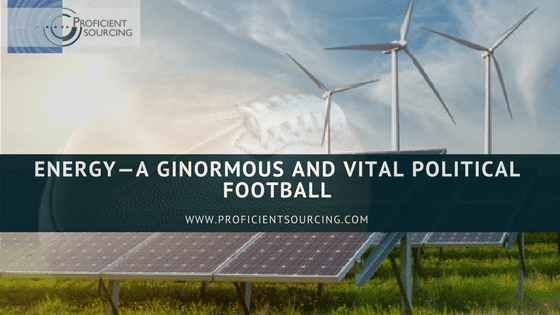
The US is the world’s #2 energy consumer, so it’s important to keep track of energy policy (or the lack thereof) as the new administration takes charge. Cheap and abundant energy is important for manufacturing’s health, and we look forward to a new positive policy direction.
As we contemplate the end of 2017, and wish all of you a very Merry Christmas season and Happy New Year, we find the information on energy both complicated and confusing. Perhaps we can clarify just a little in this and future newsletters. We would be delighted with blog contributions as well. We will most certainly be hearing a great deal about energy—and the environment—so we all need to be prepared.
We have often checked in with Boone Pickens’ podcasts on energy, and we recommend them for anyone with a general interest—especially for news of gas and oil developments. Here is a link: https://www.pickensplan.com/.
A Few Data Points
The US Energy Information Administration and questions come to mind. While much of the below might be interesting cocktail party conversation, there’s a chance our math is in error. A word to the wise….
- The world’s production of oil is about 90 million barrels per day, and the US uses about 20 million of those. 40-45% of US oil comes from domestic sources, 15-18% from Canada and 5-10% from Mexico. 10% or less comes from the middle east.
- Energy is measured in a variety of ways, but the btu (British thermal unit) is the most common for comparisons. Unfortunately, it’s a small amount of energy, so country data result in enormous figures. For example, the 2015 US annual energy consumption was about 98,000,000,000,000,000 (98 quadrillion) btu’s. One kwh of electric power equals 3412 btu. If your local power plant is rated at 1500 megawatts, one hour’s power at capacity is about 5 billion btu’s if our math is correct.
Seems to us we need a better unit of measure—something like an energy equivalent of light-years so we can conserve zeros. Is there such a thing?
- For comparison purposes, China is the #1 primary energy consumer at 120,000.000,000.000,000 (120 quadrillion btu’s). #3 is Russia at 30 quadrillion. So it’s useful to note the gap between China, the US, and everyone else.
- The various types of energy are not interchangeable. Nuclear, wind and solar have no transportation application, for example—at least not at this point. Likewise, oil (that’s crude oil, and not counting natural gas) is not a significant factor in electric generation. Both transportation and electrical power are gigantic by themselves, and a separate energy/environmental policy may be necessary for each.
- in 2015 US energy consumption was made up of these:
Electric power 39%
Transportation 28%
Industrial 22%
Residential 7%
Commercial 4%
- Domestic energy production (2015-89 quadrillion btu) came from these (and 9% of our consumed total came from imported oil):
Natural gas 32%
Petroleum 28%
Coal 21%
Renewables 11%
Nuclear 9%
(US domestic oil production is only about 40-45% of our total requirement. The above would appear to be inconsistent, since it shows US production several times that contributed by imported oil. Is this a good example of conflicting and confusing energy information or are we missing something? All this is from the same US Energy Information Agency).
- Renewables in 2015 consisted of these (total 9577 trillion btu):
BioMass 49%
Hydroelectric 25%
Wind 19%
Solar 5%
Geothermal 2%
- With all the recent news about solar energy it represented about 1-2% of total electrical power in 2015. In order to become a significant factor it would be helpful to know the real estate needed for a given amount of power generated by solar. If your city is powered by a 1500 megawatt power plant, how much land would be needed to convert that to solar (or wind, for that matter)?
- Nuclear power has fallen out of favor over the last decades. One reason is cost and time to bring a plant on line. So is it noteworthy that while it takes 10-15 years to get a nuke operational, it takes only 3 years to do so if you surround it with a Navy aircraft carrier. How can this make any sense?
- Increasing wind and solar may require a quantity of materials that creates new and perhaps impossible supply issues. Rare earths and materials needed for batteries, including disposal, may make these sources problematic as use grows exponentially.
- Efficiency is not indicated in these data. For example, the electricity from your power plant can be used to charge an electric car; stored in the battery and then used as the electric car is driven. Alternatively, the power is used in an oil refinery to generate gasoline, which is then used in a standard car. How do these 2 alternatives compare in energy consumed?
As we can all see, the new administration has a tall order to create a national energy policy. It is an extremely complicated issue, and obviously overlaps with environmental issues in a major way. Again, the availability of cheap and abundant energy is important for manufacturing. And this is especially true in the US because we have such large energy resources available.
So beware of cost benefit stories as all this unfolds in the months ahead. Merry Christmas and Happy New Year to all. We’ll be back in 2017 and perhaps we will learn things less confusing.

